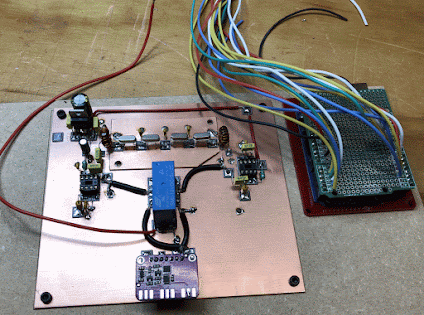I'm having only limited success with the 80 meter receiver project. Some of the modules work but I'm having problems with the mixer and product detector. I have built 5 VFOs trying to get one that is stable enough for reliable operation. While they all work to some degree, there seems to be too much frequency drift. So.... I've been working on a couple of other projects to take a break from that project.
I've been working on re-learning morse code, so I though I would build a code practice oscillator. Some pics of that project are below:
While there are many basic circuits for constructing a CPO, the sound that they make is very disappointing. So this was a circuit that creates a true sine wave signal so the sound is quite satisfying.
The finished CPO
With the CPO finished, it was time to start another project. I found a schematic for a 40 meter ham band receiver that uses varactors for tuning. Traditionally, radio tuning was accomplished with variable capacitors, sometimes large mechanical devices that are becoming more difficult to obtain and often expensive. Varactors are semiconductor diodes that change capacitance with a varying voltage.
Like a previous project, I found an interesting circuit on AA7EE's web blog that seemed to fit the bill. It is a regenerative 40 meter ham band receiver.
The finished project. And it works!











































